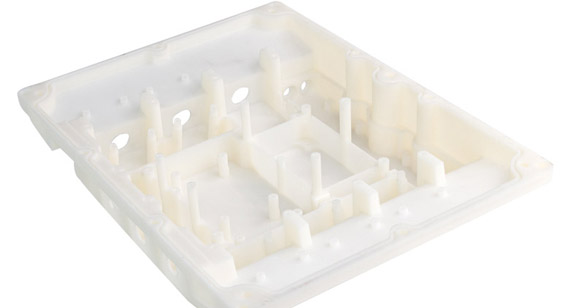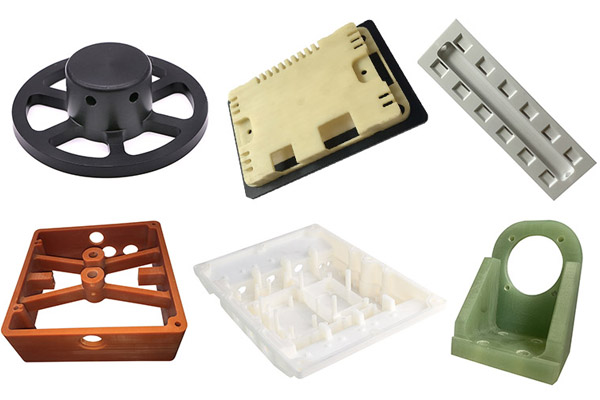15 years one-stop China custom CNC machining parts factory

Hey there I’m VMT Sam!
With 25 years of CNC machining experience we are committed to helping clients overcome 10000 complex part-processing challenges all to contribute to a better life through intelligent manufacturing. Contact us now
 418 |
Published by VMT at Jun 04 2024
418 |
Published by VMT at Jun 04 2024
Nylon, an important engineering plastic and synthetic fiber material, has played a significant role in various fields since its inception. This article will provide a detailed introduction to the properties, types, advantages, disadvantages, and applications of nylon materials, and explore the process selection for CNC machined nylon parts.
Nylon, also known as polyamide (PA), is the world’s first synthetic fiber developed by the distinguished American scientist Carothers and his research team. Nylon is a thermoplastic resin with a molecular backbone containing repeating amide groups (-NHCO-), offering excellent mechanical properties, heat resistance, wear resistance, and chemical stability.

Nylon materials have the following main properties:
High Strength: Nylon materials have higher strength than many natural and synthetic fibers, featuring excellent wear resistance, tear resistance, and fatigue resistance.
Good Heat Resistance: Nylon materials have a high heat deformation temperature and heat resistance, maintaining stable performance at higher temperatures.
Good Chemical Stability: Nylon materials have good resistance to acids, alkalis, greases, and organic solvents, making them less susceptible to corrosion.
Excellent Processing Performance: Nylon materials are easy to process and form, capable of being molded into various shapes and sizes through injection molding, extrusion, and compression molding.
Properties and Applications of Nylon 6
Nylon 6, made by the ring-opening polymerization of caprolactam, has good mechanical properties, wear resistance, and heat resistance, and is widely used in automotive parts, electrical fittings, and mechanical components.
Properties and Applications of Nylon 66
Nylon 66, made by the polycondensation of hexamethylenediamine and adipic acid, exhibits excellent mechanical properties, heat resistance, and corrosion resistance, suitable for manufacturing bearings, gears, and seals.
Properties and Applications of Nylon 12
Nylon 12, with a low friction coefficient, has excellent wear resistance and self-lubricating properties, mainly used in parts requiring low friction coefficients, such as sliding bearings and seals.
Properties and Applications of Nylon 610
Nylon 610, made by the polycondensation of hexamethylenediamine and sebacic acid, features good heat resistance and oil resistance, suitable for making high-temperature and oil-resistant parts.
Properties and Applications of Nylon 1010
Nylon 1010, a high-performance nylon material, has excellent mechanical properties and heat resistance, primarily used in high-end mechanical components and automotive parts.
Advantages of Nylon (PA)
High Strength: Superior to many natural and synthetic fibers, nylon materials exhibit excellent wear resistance, tear resistance, and fatigue resistance.
Good Heat Resistance: High heat deformation temperature and heat resistance ensure stable performance at elevated temperatures.
Good Chemical Stability: Resistant to acids, alkalis, greases, and organic solvents, making them less prone to corrosion.
Excellent Processing Performance: Easy to process and form into various shapes and sizes through multiple methods such as injection molding, extrusion, and compression molding.
Disadvantages of Nylon (PA)
High Water Absorption: Nylon materials easily absorb water, leading to dimensional changes and reduced mechanical properties.
Poor Light Resistance: Vulnerable to ultraviolet rays, long-term exposure to sunlight degrades performance.
Poor Antistatic Properties: Prone to static electricity, affecting usage performance.
Nylon materials are widely used in machinery, automotive, electrical, textile equipment, chemical equipment, aerospace, and metallurgy. In CNC machining, nylon materials are often used to manufacture various parts and prototype development.

During the development of CNC machined nylon parts, the following processes can be selected:
CNC machining is a high-precision, high-efficiency processing method suitable for manufacturing nylon parts with various complex shapes. CNC machining can precisely control the dimensions and shapes of the parts, ensuring accuracy and quality.

3D Printing
3D printing technology can quickly transform digital models into physical parts, particularly suitable for prototype development and rapid manufacturing. Using nylon materials for 3D printing can produce high-precision, high-performance nylon parts.
Injection Molding
Injection molding is a method for mass-producing nylon parts. By heating the nylon material to a molten state and injecting it into a mold, then cooling and solidifying it, the desired parts are obtained. Injection molding can manufacture complex-shaped, dimensionally accurate nylon parts.
As a significant engineering plastic and synthetic fiber material, nylon finds extensive applications in various fields. Understanding the properties, types, advantages, disadvantages, and applications of nylon materials allows for better selection and usage. In the development of CNC machined nylon parts, selecting the appropriate process is crucial for ensuring part quality and performance.
In practical applications, CNC machined nylon parts may encounter common issues such as dimensional changes, deformation, and cracking.
Dimensional Changes
Nylon materials have high water absorption, which can cause dimensional changes during processing and use. To minimize dimensional changes, nylon materials can be dried before processing, and the processing environment’s humidity can be controlled, selecting nylon materials with lower water absorption.
Deformation
Nylon materials may deform due to internal stress release during processing. To reduce deformation, appropriate heat treatment processes such as annealing can be used to eliminate internal stress. Optimizing processing parameters like cutting speed and cutting depth can also effectively reduce deformation.
Cracking
Nylon materials may crack due to stress concentration and temperature changes during processing and use. To prevent cracking, stress concentration areas should be avoided in part design, temperature changes during processing should be controlled, and nylon materials with better anti-cracking performance should be selected.
Wear Resistance Decline
Although nylon materials have good wear resistance, they may still experience wear during long-term use. To improve wear resistance, surface coatings can be applied, or nylon materials with better wear resistance can be chosen.
Static Issues
Nylon materials are prone to static electricity, affecting performance. To eliminate static, antistatic agents can be added during processing, or the humidity in the usage environment can be increased. Selecting nylon materials with better antistatic properties is also an effective solution.
As a crucial engineering plastic and synthetic fiber material, nylon has broad application prospects in the CNC machining field. By deeply understanding the properties, types, advantages, disadvantages, and applications of nylon materials, we can better select and use them, improving the quality and performance of CNC machined nylon parts. At the same time, we can take corresponding measures to prevent and solve issues that may arise during processing and use.
In the future, with continuous technological advancement and CNC machining development, nylon materials will find even broader applications. We look forward to developing more high-performance, adaptable, and cost-effective nylon materials, bringing more innovation and breakthroughs to the CNC machining field.
Ready To Start Your Next Project?
Get Instant Quote

Request a Free Quote
Send us a message if you have any questions or request a quote. We will get back to you ASAP!